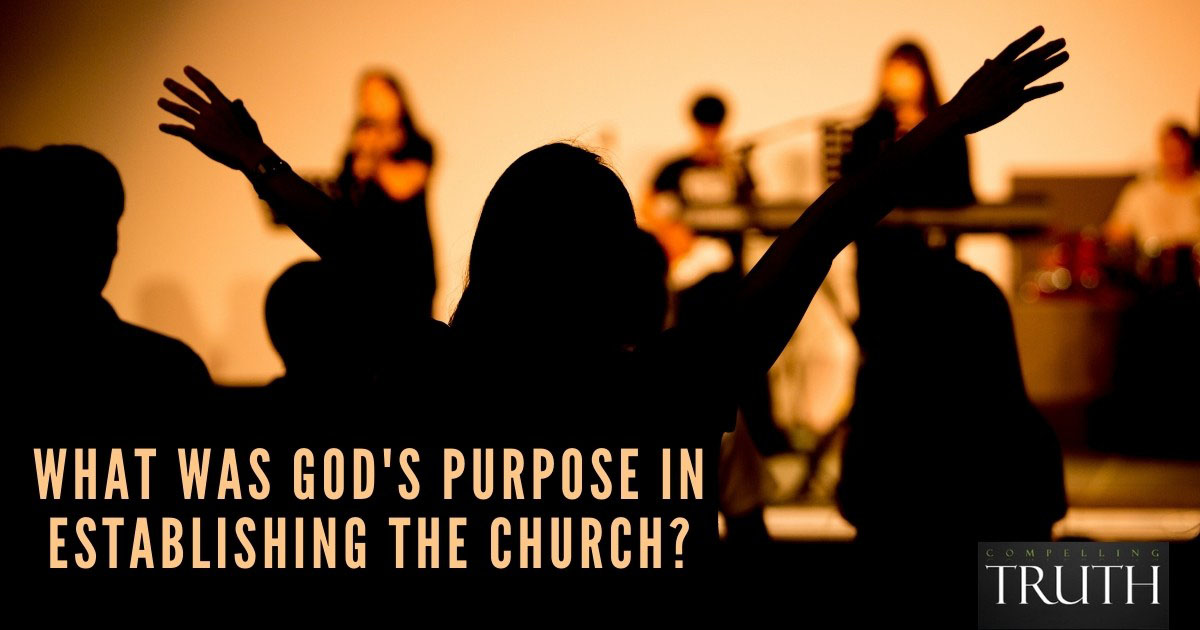The New Testament and church historians speak of the rapid early growth of the church. What can we glean from the history of the early church that might be relevant to church growth today?
First, it is clear Jesus is the basis for the church's growth. He said, "I will build my church, and the gates of hell shall not prevail against it" (Matthew 16:18). No person can take credit for the church's growth. It is the result of God's work.
Similarly, "growth" is not about the number of attendees. It is not the amount of people attending a local church that matters, but the advance of the Gospel and the spiritual growth of members of the universal Church.
In terms of numerical attendance, however, it is clear that a healthy church naturally grows. Despite persecution, lack of buildings, and other barriers, the first church grew daily (Acts 2:47). While not all New Testament churches grew at this pace, the church naturally grew as people shared the good news of Jesus with friends and neighbors and some of these individuals came to faith in Christ. When we are actively seeking God and loving one another, local churches naturally grow in their faith and in number of attendees.
The early church highly emphasized the essentials of teaching, fellowship, worship, and prayer. These practices are noted in Acts 2:42 and can be seen in many of the congregations started by the apostles in Acts and Paul's letters.
Growing churches tend to have shared leadership. From Acts 13:1-5 we see that the large, growing church in Antioch had at least five teachers from a diversity of cultural backgrounds. When Paul wrote to Timothy (1 Timothy 3) and Titus (Titus 1), he wanted them to select elders (plural) for local congregations.
Growing churches focus on multiplication. The church at Antioch prayed and fasted and then sent its top leaders to start new churches (Acts 13:1-5). When the church in Jerusalem was persecuted after Stephen's death, they did not worry about the drop in church attendance! Instead, they scattered to many communities and started new churches.
The early church's growth was often associated with meeting practical needs. James taught, "Religion that is pure and undefiled before God, the Father, is this: to visit orphans and widows in their affliction, and to keep oneself unstained from the world" (James 1:27). He considered both personal purity and serving others as essential in the church. Paul and the other apostles often noted the importance of serving the poor. In fact, history reveals the majority of the early church was composed of the lower economic class of society until the fourth century (though there were notable exceptions).
It is clear that a church can be large and strong or large and weak. Church size does not equal church health. Revelation 2—3 notes several congregations, some of significant size, that were sinful in some of their practices. Still today, a large or fast-growing church is not automatically a healthy church. A closer look must be taken to make sure a biblical gospel is being preached and biblical practices are being used.
Church growth comes from Jesus Christ, the founder of the church. However, it is also clear that healthy, growing churches included certain dynamics in Scripture from which we can learn today.
First, it is clear Jesus is the basis for the church's growth. He said, "I will build my church, and the gates of hell shall not prevail against it" (Matthew 16:18). No person can take credit for the church's growth. It is the result of God's work.
Similarly, "growth" is not about the number of attendees. It is not the amount of people attending a local church that matters, but the advance of the Gospel and the spiritual growth of members of the universal Church.
In terms of numerical attendance, however, it is clear that a healthy church naturally grows. Despite persecution, lack of buildings, and other barriers, the first church grew daily (Acts 2:47). While not all New Testament churches grew at this pace, the church naturally grew as people shared the good news of Jesus with friends and neighbors and some of these individuals came to faith in Christ. When we are actively seeking God and loving one another, local churches naturally grow in their faith and in number of attendees.
The early church highly emphasized the essentials of teaching, fellowship, worship, and prayer. These practices are noted in Acts 2:42 and can be seen in many of the congregations started by the apostles in Acts and Paul's letters.
Growing churches tend to have shared leadership. From Acts 13:1-5 we see that the large, growing church in Antioch had at least five teachers from a diversity of cultural backgrounds. When Paul wrote to Timothy (1 Timothy 3) and Titus (Titus 1), he wanted them to select elders (plural) for local congregations.
Growing churches focus on multiplication. The church at Antioch prayed and fasted and then sent its top leaders to start new churches (Acts 13:1-5). When the church in Jerusalem was persecuted after Stephen's death, they did not worry about the drop in church attendance! Instead, they scattered to many communities and started new churches.
The early church's growth was often associated with meeting practical needs. James taught, "Religion that is pure and undefiled before God, the Father, is this: to visit orphans and widows in their affliction, and to keep oneself unstained from the world" (James 1:27). He considered both personal purity and serving others as essential in the church. Paul and the other apostles often noted the importance of serving the poor. In fact, history reveals the majority of the early church was composed of the lower economic class of society until the fourth century (though there were notable exceptions).
It is clear that a church can be large and strong or large and weak. Church size does not equal church health. Revelation 2—3 notes several congregations, some of significant size, that were sinful in some of their practices. Still today, a large or fast-growing church is not automatically a healthy church. A closer look must be taken to make sure a biblical gospel is being preached and biblical practices are being used.
Church growth comes from Jesus Christ, the founder of the church. However, it is also clear that healthy, growing churches included certain dynamics in Scripture from which we can learn today.



